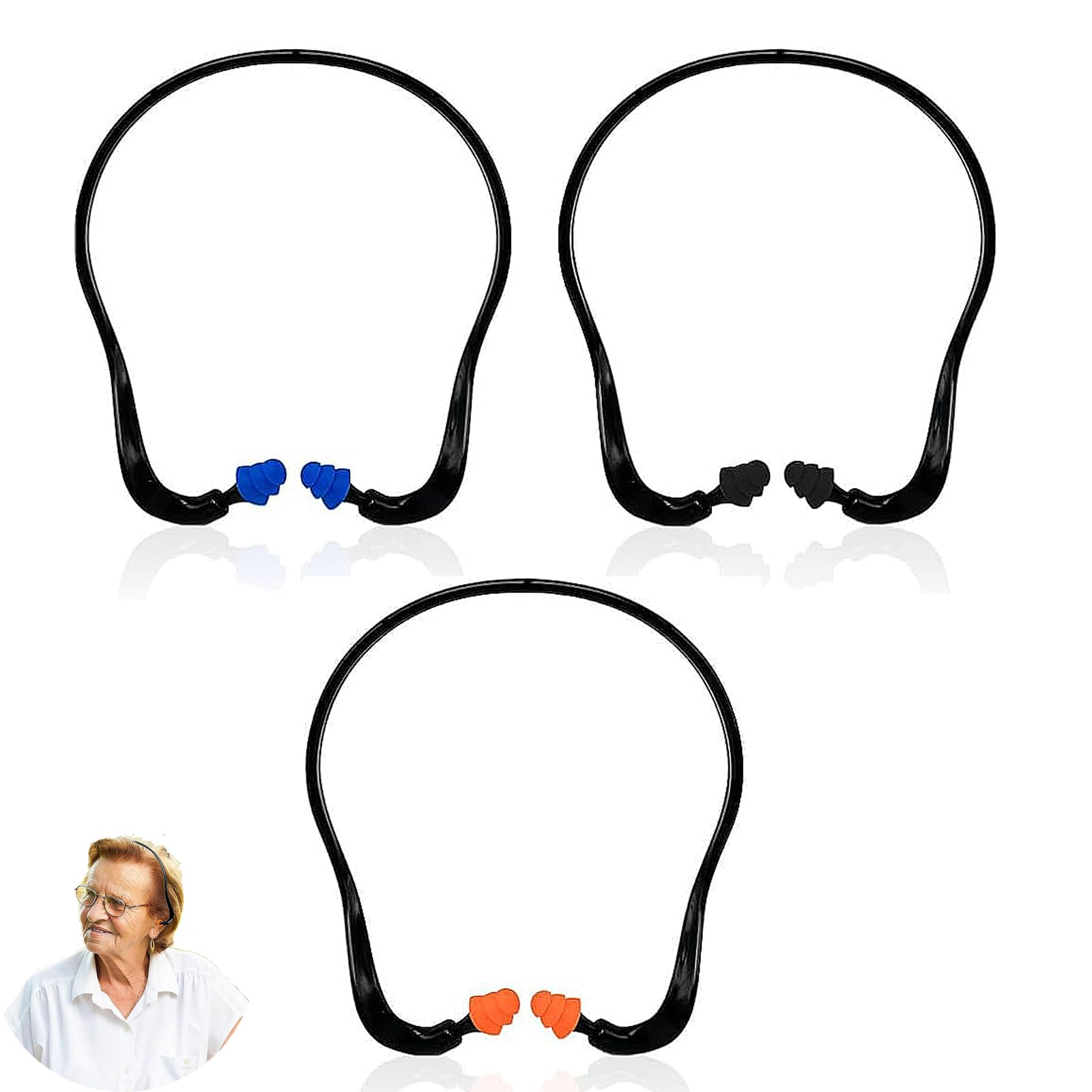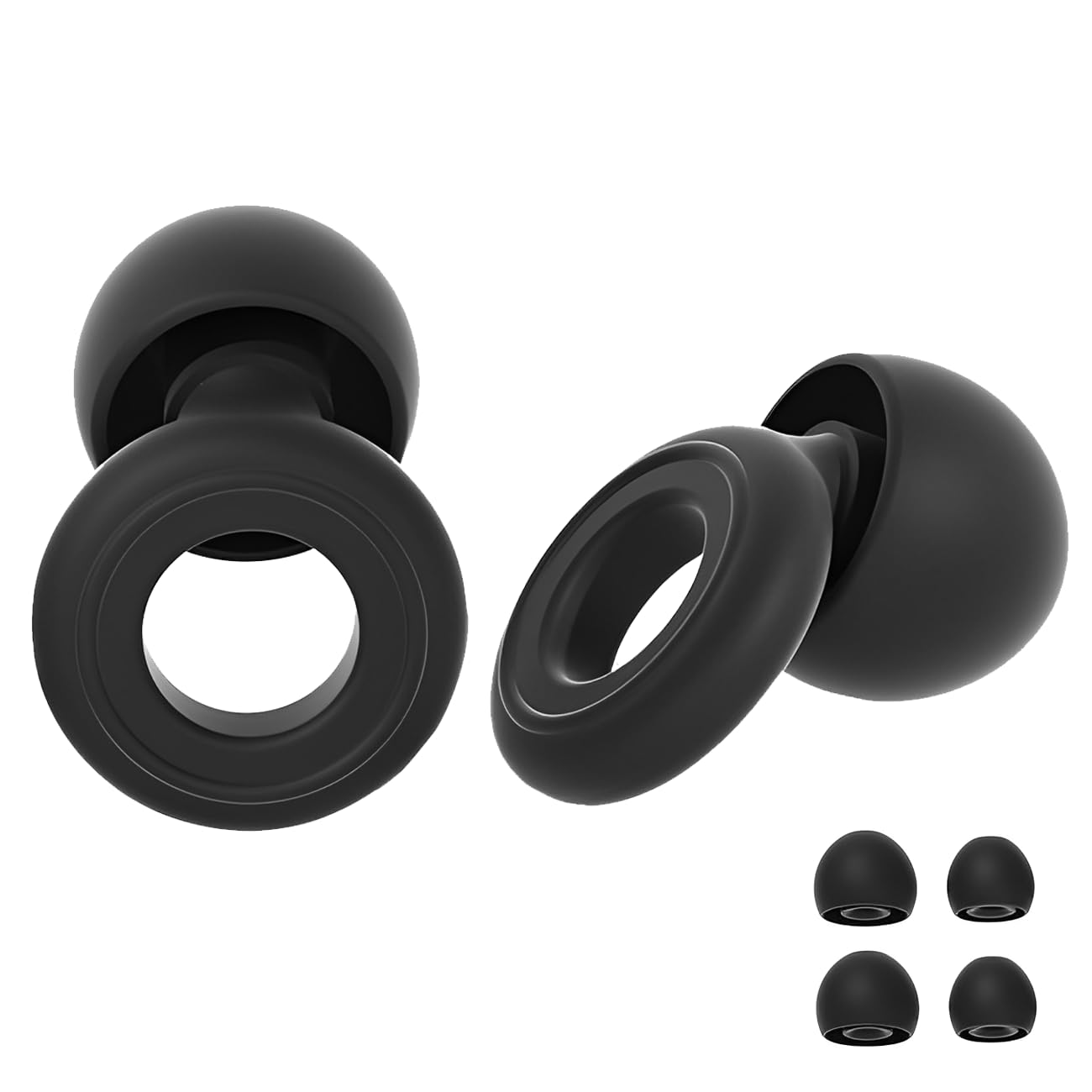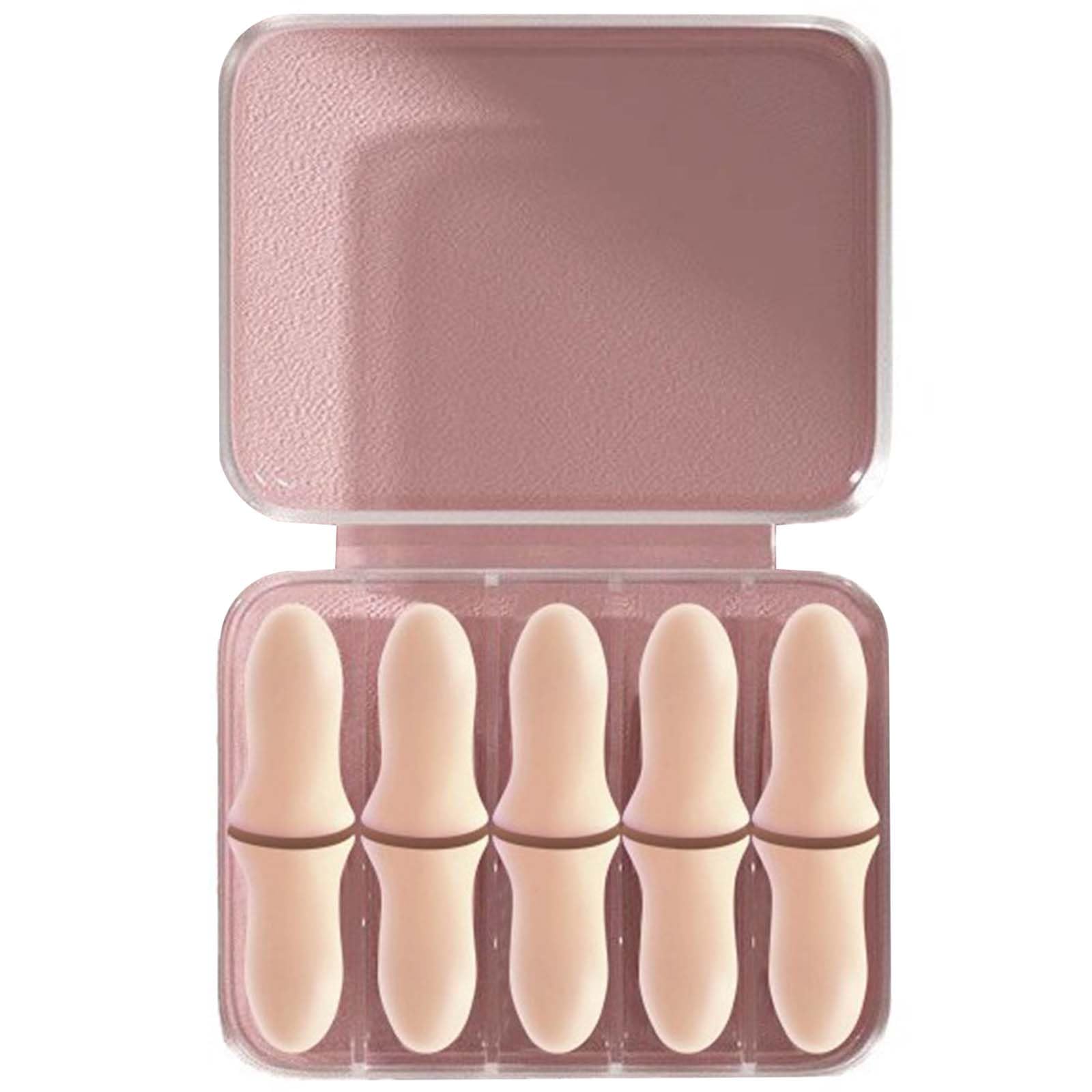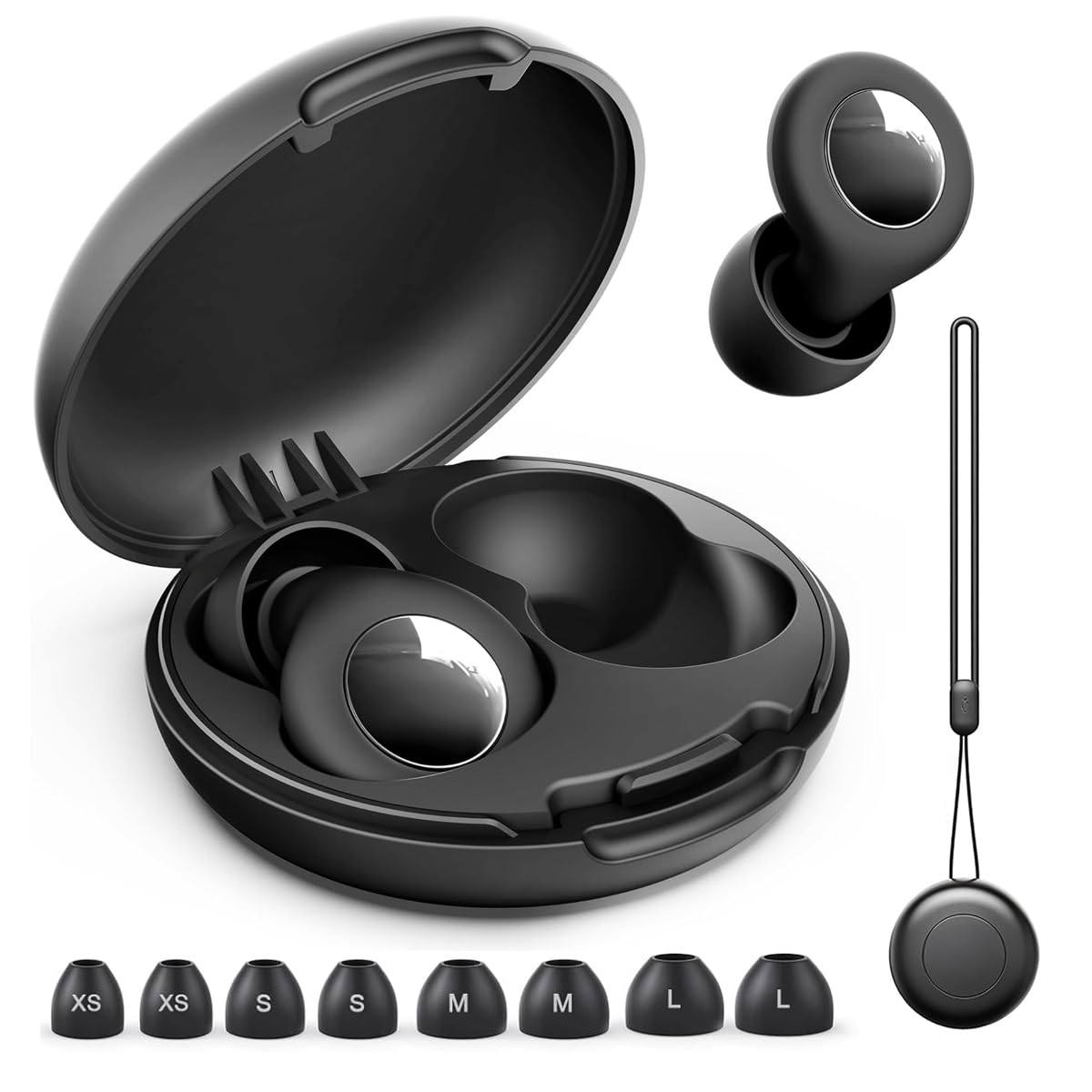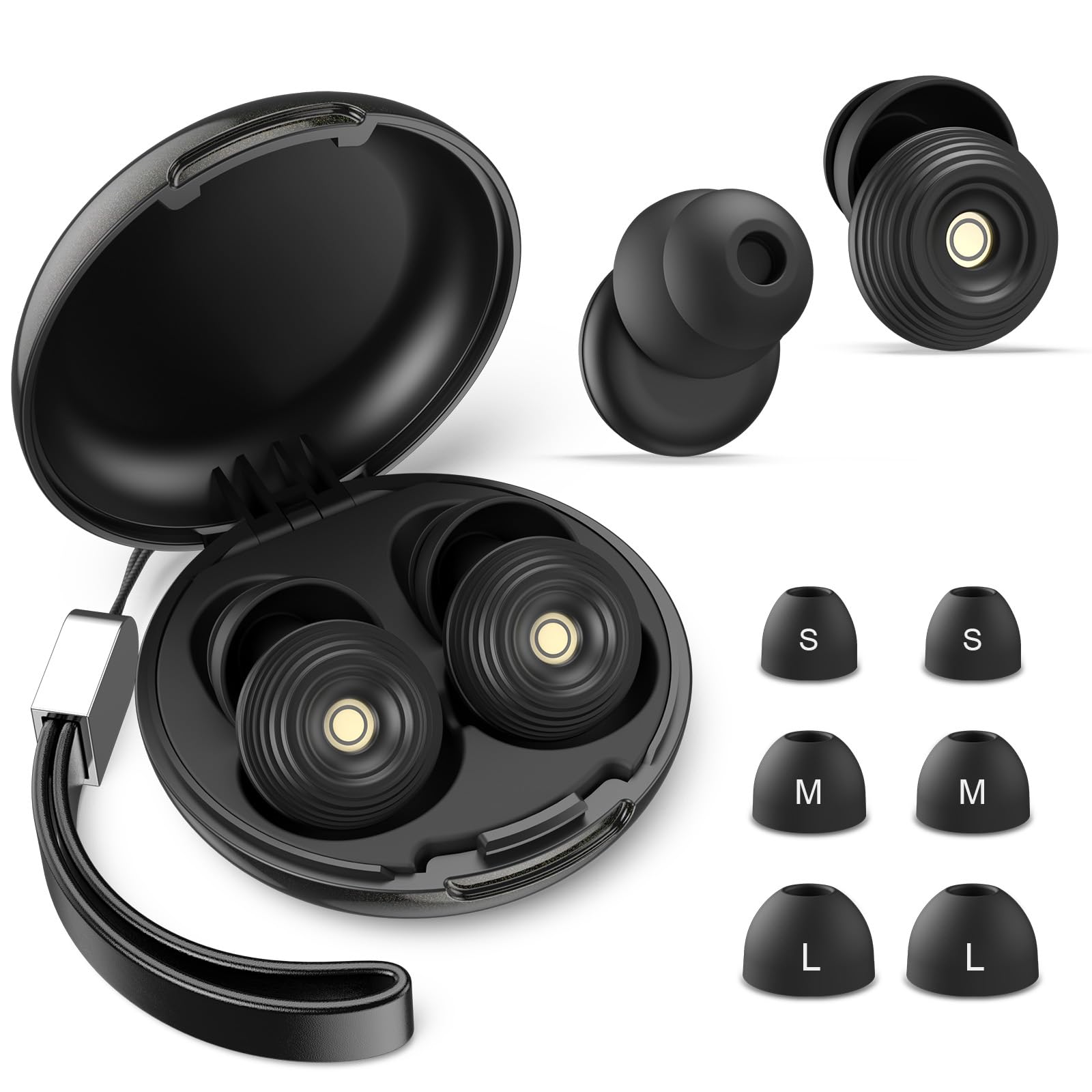Choosing between reusable silicone and disposable foam earplugs comes down to comfort, hygiene, and value over time. Foam plugs are cheap and widely available. Silicone plugs feel gentle and can be washed and reused. This guide compares fit and seal, cleaning routines, lifespan, and cost per night so you can pick a style that suits your ears and your bedtime routine.
Night noise drops with sleep earplugs that seal comfortably.
Fit and seal in real bedrooms
Foam expands inside the ear canal to create a snug seal. It is forgiving of small size differences and can achieve strong attenuation when inserted correctly. Some users find the pressure uncomfortable, especially if they sleep on their side or have narrower ear canals. Reusable silicone mouldables sit at the entrance rather than deep in the canal. You press and shape them to cover the opening. The seal can be very comfortable for side sleepers, and the shallow fit reduces the sense of fullness in the ear. The trade off is that you must shape them carefully and use the right amount of material to avoid leaks.
Hygiene and maintenance
Foam is disposable. Replace it often to keep things clean and to maintain spring. Many people use a fresh pair every night or two. Silicone is washable with mild soap and water. Let it dry before reuse. Because silicone touches the outer ear, it can pick up skin oils. Regular cleaning keeps the surface tacky so it adheres to the skin for a better seal. Wash your hands before fitting any plug so oils and dust do not transfer to the material or into the ear.
Lifespan and cost per night
Silicone plugs can last for many nights if cared for, which lowers cost per use. Foam costs more over a month because you replace pairs frequently, but the upfront outlay is low and you always have a clean set ready. If you use plugs occasionally, foam may be cheaper across the year. If you use them nightly, silicone can be cost effective and kinder to the skin, provided you keep up with cleaning.
Comfort for side sleepers
Side sleepers often prefer silicone because it does not protrude and can be flattened so it lies flush. Shorter foam designs and soft flanged plugs are also popular, but they still enter the canal and can press into the pillow. People who switch sides frequently during the night may find silicone’s shallow fit reduces wake ups when the ear contacts the pillow.
Noise reduction and realistic expectations
Foam often carries higher SNR numbers on the box. In real use, a well seated silicone plug can perform similarly for snoring and typical urban noise. The key is the seal. A slightly lower rated product that seals reliably beats a higher rated plug that leaks. If you are sensitive to variable sounds, combine earplugs with a low, steady fan or white noise so you are not pulled awake by changes in noise level.
Which style is right for you
If you want low hassle and maximum attenuation with minimal care, foam is a practical default. If you value comfort at the ear entrance and plan to reuse plugs many times, silicone is a good choice. There is no harm in keeping both on hand. Some people use silicone most nights and switch to foam for heavy snoring or travel.
Soft silicone and shorter foam designs that suit UK sleepers appear in earplugs that combine comfort and noise reduction. Where light leaks are an issue, many choose sleep masks that seal well.
FAQs
Are silicone earplugs hygienic?
Yes, if you wash them regularly with mild soap and water and let them dry fully between uses. Replace them when they lose tackiness or pick up lint that you cannot remove.
Which is better for very loud snoring?
Properly inserted foam often blocks more, but comfort and seal are the deciding factors. Try both. Many people find they sleep longer with silicone because it stays comfortable when they roll onto the side.
Can I use earplugs every night?
Yes, provided you keep them clean, replace foam frequently, and let your ears rest if you feel irritation. If irritation persists, speak to a pharmacist or GP.
